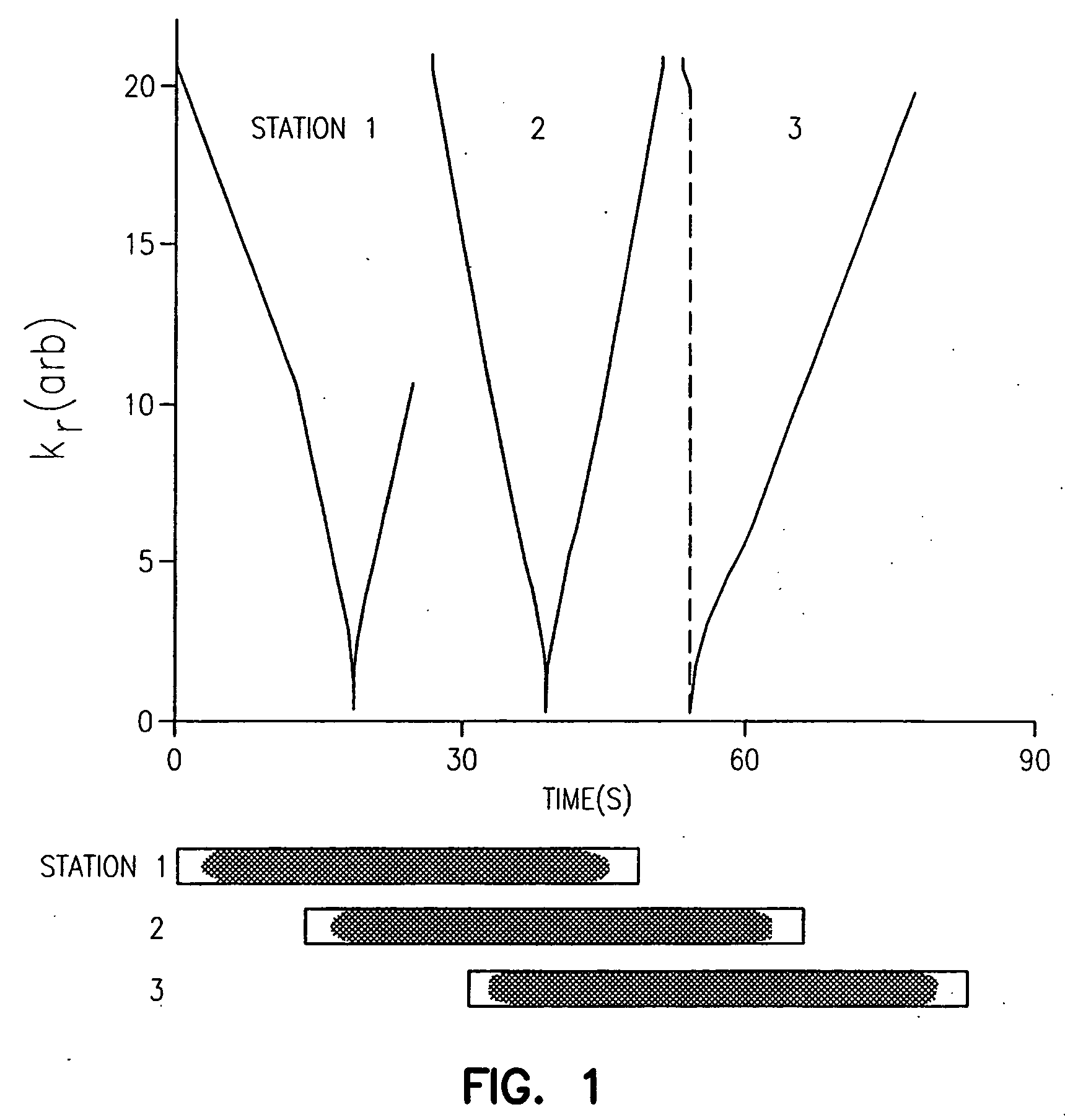Method and apparatus for anatomically tailored k-space sampling and recessed elliptical view ordering for bolus-enhanced 3D MR angiography
a 3d mr angiography and k-space sampling technology, applied in the field of mr angiography, can solve the problems of reducing affecting the accuracy of mr angiography, and unable to image multiple stations using a single administration of contrast agents, so as to increase the dose sharing between stations and minimize scan time
- Summary
- Abstract
- Description
- Claims
- Application Information
AI Technical Summary
Benefits of technology
Problems solved by technology
Method used
Image
Examples
second embodiment
[0034] The described process of sample size reduction and image processing may be implemented by software. In the invention, the number of samples taken can correspond to the number of samples taken according to the Nyquist rate, but spaced further apart than in Nyquist sampling. This would extend the spatial frequency, thereby improving image resolution over standard Nyquist sampling.
Patient Studies of the Peripheral Extremities
[0035] In order to compare the present invention to a known protocol, 30 consecutive patients were recruited for evaluation of clinically suspected peripheral vascular disease at two identical MR imaging systems from October to December, 1999. The conventional protocol was used to image 16 patients at one facility (3 female, 13 male; ages 43 to 89 with a mean of 70). The method of the present invention was used for the remaining 14 (2 female, 12 male; ages 41 to 76 with a mean of 62) at the other facility. The choice of location and protocol was based on p...
embodiment 1
[0070] Then the recessed centric k-space sampling algorithm that matches the k-space sampling to the contrast enhancement curve is to allocate k-space point from the array K[ ] (as defined in the above embodiment 1) using the following index assignment:
[0071] Index=D[n] for the nth point to be acquired, with n=0, 1, . . . , N−1. (N is the total number of k-space points, as defined in embodiment 1).
[0072] Summarizing this scheme, the lowest spatial frequency data is acquired at the estimated maximum contrast enhancement, the next lowest spatial frequency data at the next highest contrast and so on.
[0073] The 3D volume to be imaged is a coronal section prescribed graphically from an axial scout scan. The top portion of FIG. 7 shows the analysis of a dynamic 2D study. The arterial and venous signals were measured as a function of time after contrast injection. The arterial only phase is observed to last 8-10 seconds. Experimental data such as this may be used to accurately simulate t...
PUM
 Login to View More
Login to View More Abstract
Description
Claims
Application Information
 Login to View More
Login to View More - R&D
- Intellectual Property
- Life Sciences
- Materials
- Tech Scout
- Unparalleled Data Quality
- Higher Quality Content
- 60% Fewer Hallucinations
Browse by: Latest US Patents, China's latest patents, Technical Efficacy Thesaurus, Application Domain, Technology Topic, Popular Technical Reports.
© 2025 PatSnap. All rights reserved.Legal|Privacy policy|Modern Slavery Act Transparency Statement|Sitemap|About US| Contact US: help@patsnap.com



